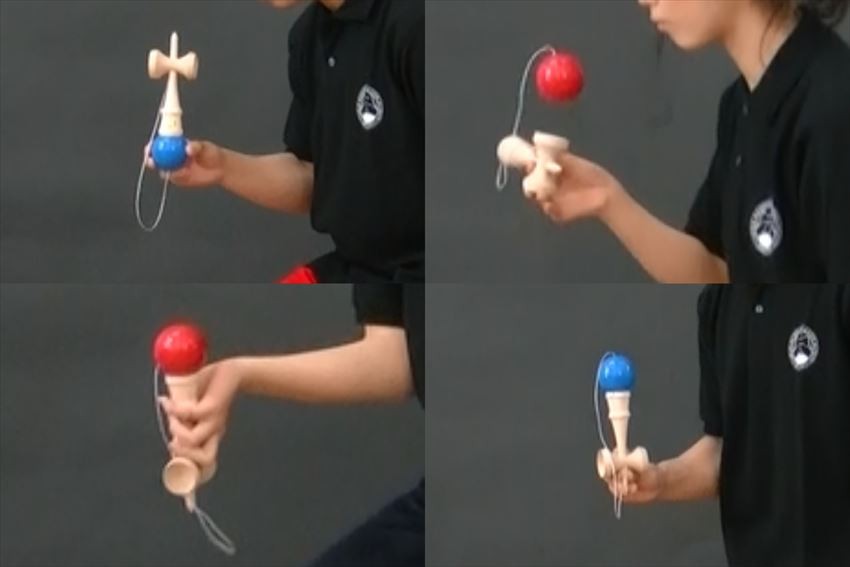
“Kendama” is a toy which made with a cross-shaped "Ken (sword)" and a holed “tama” (ball). In Japan, there is even an official competition of the Kendama techniques which organized by "Japan Kendama Association", and it has become a hot topic for a while. In this article, we will introduce about the history, the name of each part of kendama, tips for a Kendama beginner, etc. It will be a good exercise as kendama is played by using knees and thighs, as well as fingers.
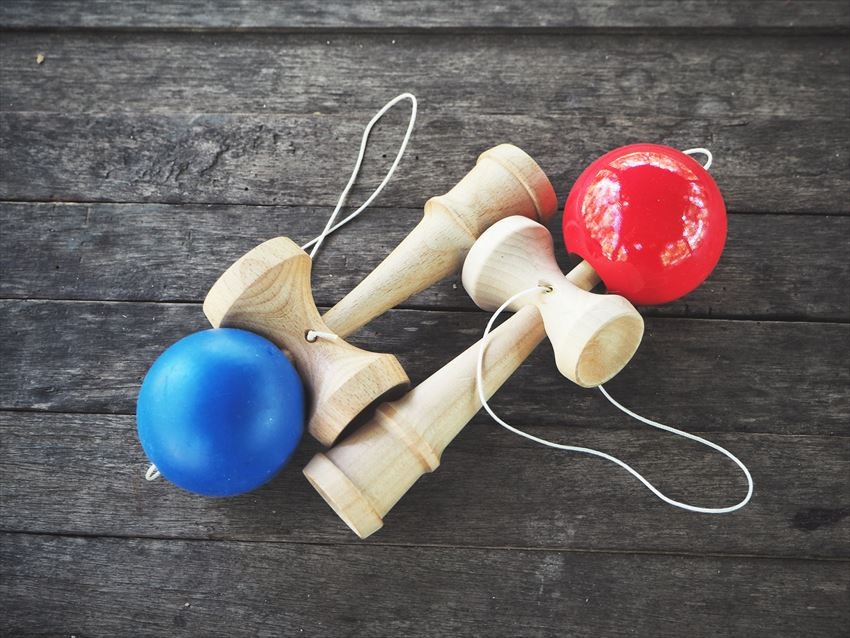
History of "Kendama"
There may be many people thinking that "Kendama" is a unique toy which only exists in Japan, however it is not true. A game which swinging the balls connected by a thread or string, and stop it by cup or stick are exist around the world.
There are various stories about the origins of kendama, but the oldest record is dating back to France in 16th century. In France, it is called as "Billeboquet", and is a popular game. There was also a time when royalty aristocrats addicted to the game. After that, it spreads around the world, it is said to have evolved independently in various places.
In Japan, there is a theory saying that kendama was introduced in the Edo period, and the original Kendama prototype was completed in Taisho Period. During that time, the game was called as “Nichigetsu(sun & moon)”, since a shallowly drilled plate like a crescent moon is used to catch a ball (sun), and it has become such a popular game during that period. In 1975, "Japan Kendama Association" was established, "Kendama which specially made for Competition" was developed, and official rules, grades and level, and the techniques development were also progressed.
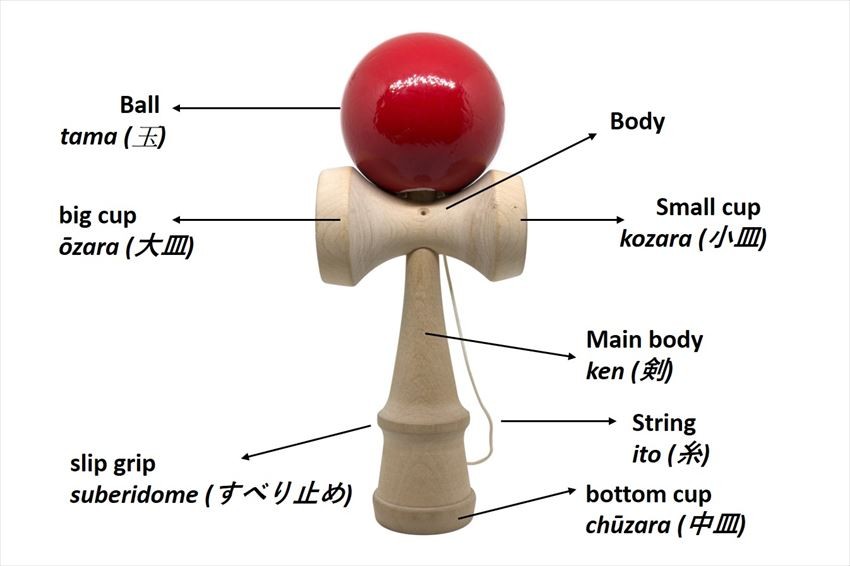
Parts name of Kendama
Kendama is made of five major parts of "tama", "Ken", "sara-do", "Ito", and "Beads".
Beads are the part that prevent the string from spreading, by tying up from the tip of the string to the hole of kendama. Recently, there are a lot of high-tech Kendama on sale such as the kendama with a ringing sound or lighting when the technique challenge is succeeded.
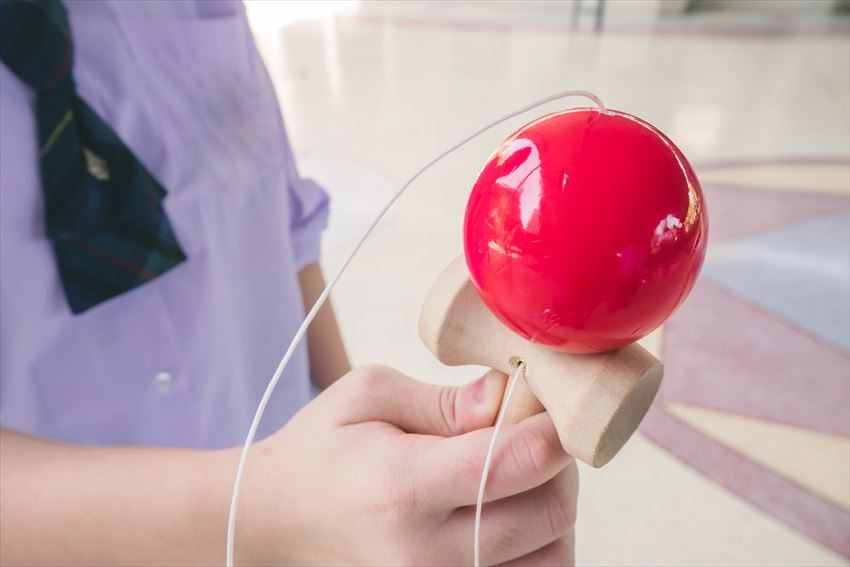
Challenge to Kendama!
Ozara
It is a technique to lift up the ball and get it onto the sara-do. The hint to play this technique is to keep the rhythm of "Ichi Ni San" (one, two, three)
- Hold the Ozara part, face the “tip of ken” downward, hang the ball and keep the position straight.
- When the movement of the ball is completely stopped, bend your knee and stretching your elbow to lower down the ball position. (Ichi)
- Lift up the ball upward by stretching your knee (Ni)
- While bending your knee and stretching your elbow, insert the ken into the bottom of the ball and get the ball landed on sara-do. (San)
Rosoku (candle)
This is a technique to put the lifted up ball on the chu-zara by using the tip of ken. It is called as "candle" because it looks like a candle with a fire.
- Grasp the tip of ken by using your fingertips, instead of using hand to grip.
- Tilt kendama slightly so that the string does not touch your hand, bend your knee and hold it so that the string in straight position.
- Stretch your knee and lift up the ball upwards.
- Place the ball on the chu-zara which you placed in horizontal position.
Nihon Isshu (A round of Japan)
It is a technique with a high difficulty with a combination of three techniques continuously, "Ozara → Kozara → Ken".
- Grip the root of the ken, face the tip of the ken upwards, and ozara pointing yourself.
- Bend your knee and lift up the ball with the momentum when you stretching the knee and catch it with kozara.
- Stretch your knee, throw up the ball, bend your knee and catch the ball with ozara.
- Stretch your knee and throw up the ball, while bending your knee, catch the ball with the tip of the ken.
Sekai Isshu (A round of the world)
A technique by adding chu-zara technique to "Nihon Isshu".
- While stretching your knee just like "Nihon Isshu", throw up the ball and there is a small change here.
- Throw the ball from kozara to ozara. And then, from ozara to chu-zara.
- Bend, and then stretch your knee to throw up the ball from chu-zara, and then catch the ball using the tip of ken.
Todai (Lighthouse)
This is a very difficult technique that many people aiming for.
- Hold the ken and keep it straight
- Lightly support the ken with your left hand, turn the sara-do so that kozara faces to your front side, then release your hand and lower down your position.
- Lift up the ken upwards.
- Move the ball right under the chu-zara of the ken which is lifted up, and land the ken on the ball surface, and keep the ken body and ball position firmly for 3 seconds
I think that there are many people who think that it is difficult after reading this article, however, please give it a try first! If you practice and understand the trick, then you will be able to do it! Kendama is very interesting in skill-uping, and "Japan Kendama Association" certifies grades and levels of kendama. If you are interested, please check here!
※Official URL of the Japan Kendama Association (English)http://kendama.or.jp/english/
※Video provided by: Japan Kendama Association
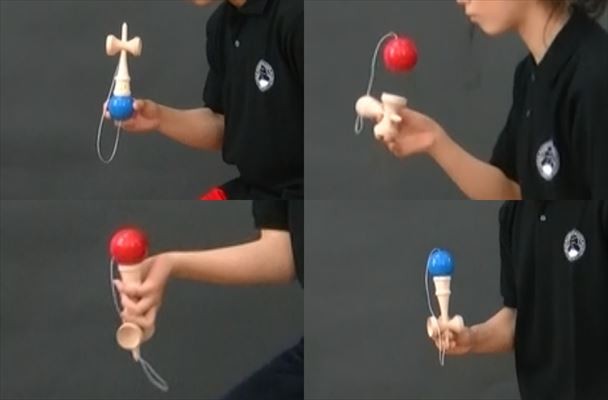
Comments